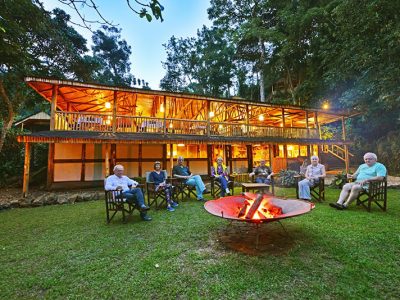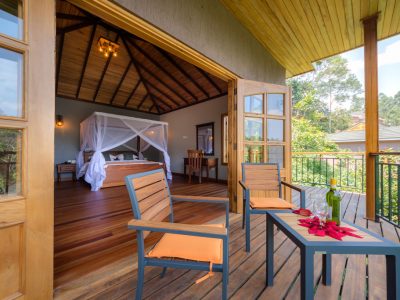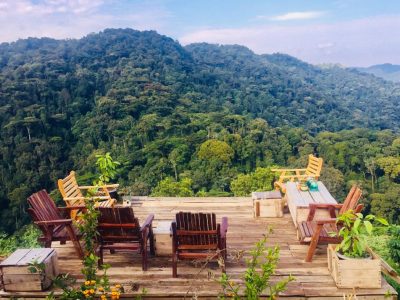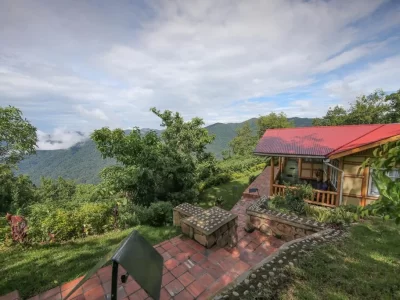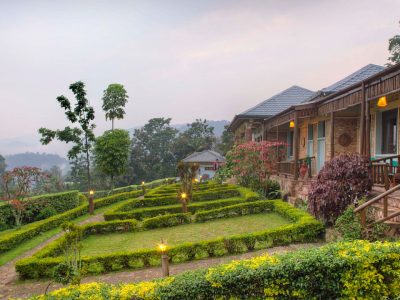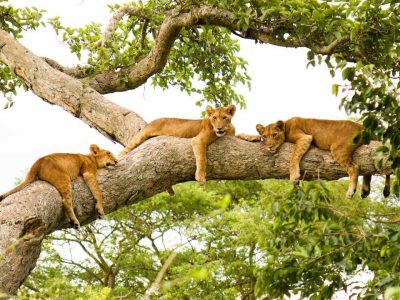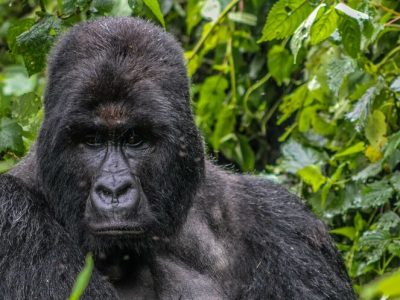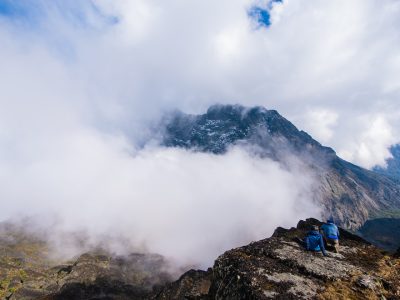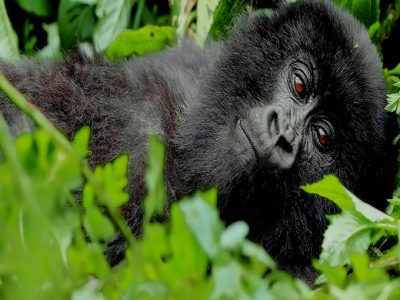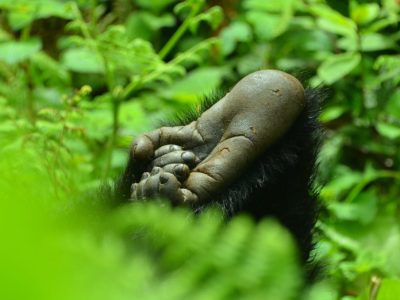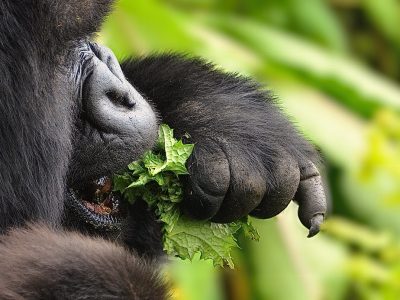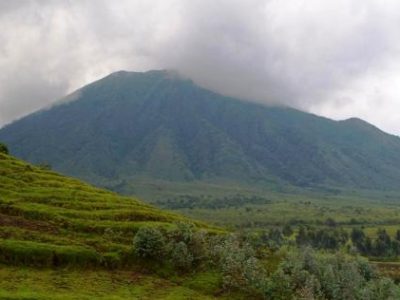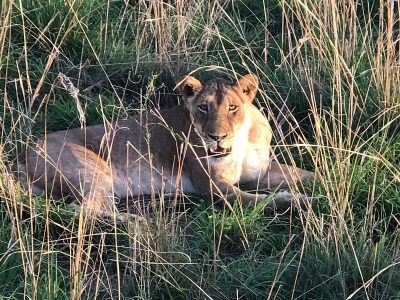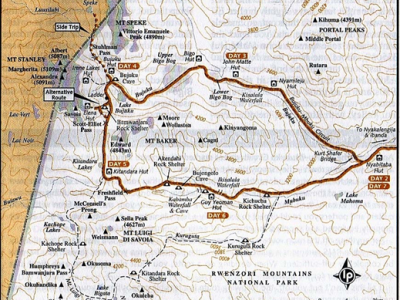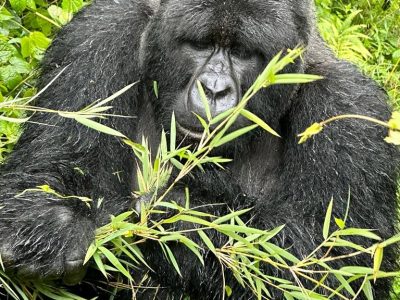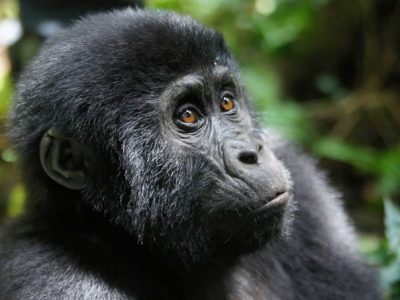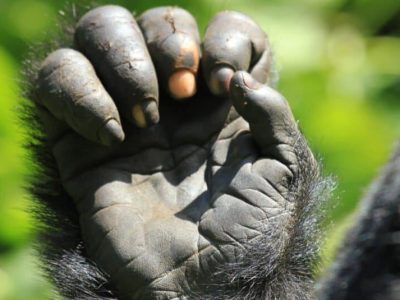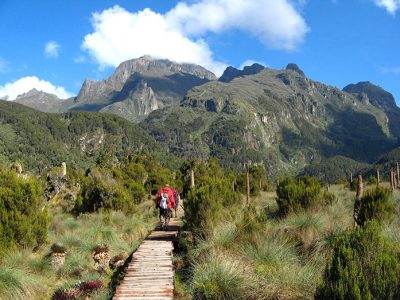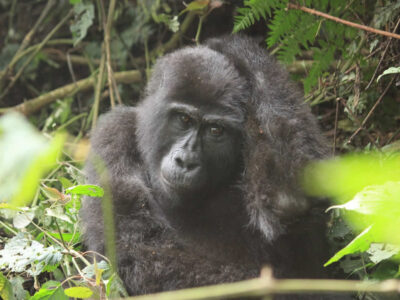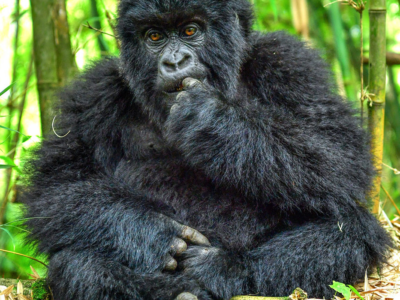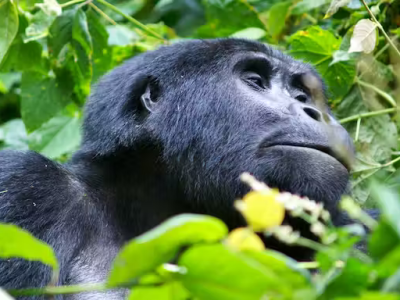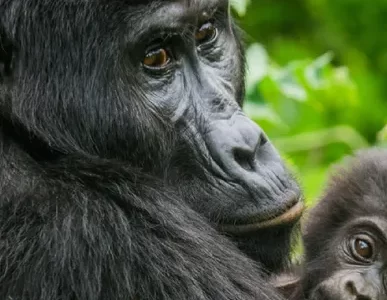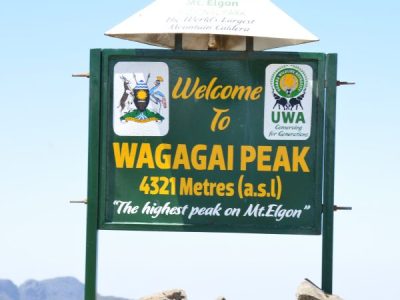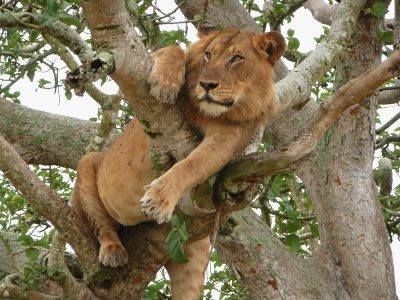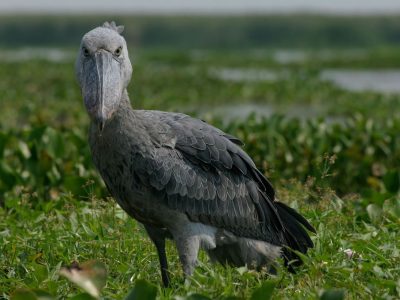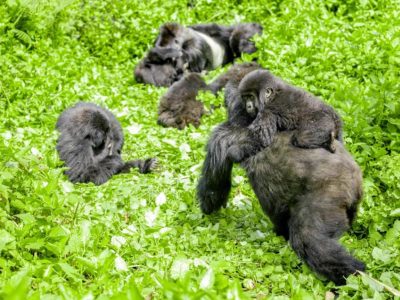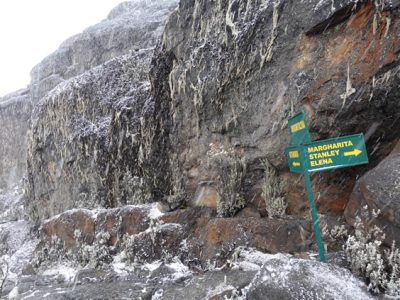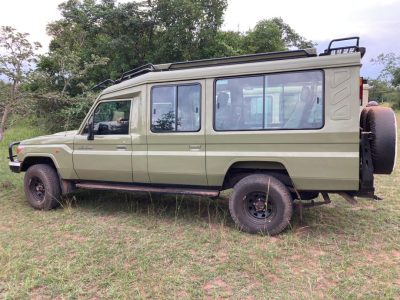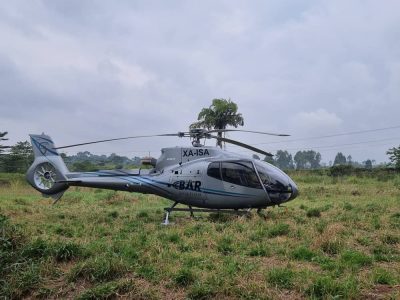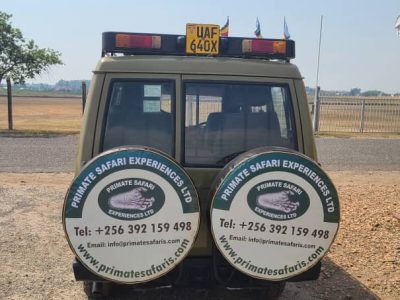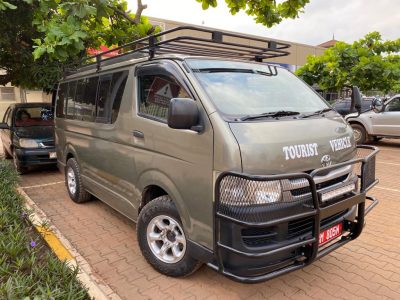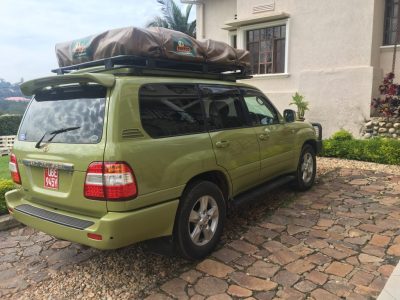Bwindi Impenetrable National Park
Looking for gorilla trekking in Uganda after the mountaineering adventure in Rwenzori Mountain climbing? Book visit to Bwindi impenetrable national park which hosts half of the world's mountain gorillas which offers gorilla trekking experiences at cheaper price compared to that of Rwanda.
Bwindi Impenetrable National Park
The Bwindi impenetrable national park is in southwestern Uganda. The park is part of the Bwindi impenetrable forest and is situated along the democratic republic of Congo border next to the Virunga national park and on the edge of the Albertine rift. Composed of 321 square kilometers of both montane and lowland forest, it is accessible only on foot. The park is a sanctuary for colobus monkeys, chimpanzees and many birds such as hornbills and Turacos. It is most notable for the 400 Bwindi gorillas, half of the world’s population of the endangered mountain gorillas. The 14 habituated mountain gorilla groups are open to tourism in the four different sectors of Buhoma, Ruhija, Rushaga and the Nkuringo in the districts of Kanungu, Kabale and Kisoro respectively all under the management of Uganda wildlife authority.
The mountain gorillas are an endangered species, with an estimated total population of about 650 individuals. There are no mountain gorillas in captivity, but during the 1960s and 1970s when some were captured to start captive breeding.
Mountain gorillas
The mountain gorillas can be found in Bwindi impenetrable one of Africa’s oldest forests, it is one of the most bio diverse forest with 200 tree species, 350 birds, 310 butterflies and 120 mammals including many primates. Bwindi has 18 habituated gorilla groups which are tracked from four trail heads. Eight permits are available for each group giving a daily maximum of 144 permits. Gorilla trekking takes two to eight hours depending on the location of the group. They can also be found in Mgahinga national park on the northern slopes of the Virunga volcanoes. The rare primates are the mountain gorillas and golden monkey getting the park a name of where gold meets silver. The parks three extinct volcanoes can be climbed providing superb regional panoramas. They can also be found in the eastern democratic republic of Congo (DRC).
Gorilla trekking experience
The forest is so thick. A person is able to do trekking from the different sectors of Buhoma, Rushaga. The fact that gorillas are at the brick of extinction, the treks are a highly restricted activity. Each experience can be completely different from the other. Trekking of some gorilla families many take longer than the others. The gorilla families are made up of different personalities, ever growing and changing. Of the four gorilla species, mountain gorillas live in the most extreme environment. The hiking is escorted by rangers and a guide to find the selected gorilla group. When the group is found, you are allowed to stay and watch them eat and do their daily work for a period of one hour. The gorilla trekking starts very early in the morning at any of the trailheads indicated on your permit. Before the rangers escort you into the jungle a park supervisor will brief you. The trekking to reach the gorillas can take 30minutes to 4 hours depending on where the group is located in the park. The forest floor is dump with no particular path to follow. In some areas you cut through thick foliage and it could be misty with little visibility. They are perfectly calm and may glance at you first but will quickly resume their normal activities.
Gorilla families
A total number of 12 families have been located in the four sectors of Bwindi impenetrable forest. About 80 gorillas have been located in Mgahinga gorilla national park. The families include;
Rushegura gorilla family with 19 members led by Mwirima who is in late 20s and a brother to Habinyanja called Rwansigazi. The place is named after where the two brothers separated to form independent groups. At an estimated age of 25, Mwirima is without question the most dominant and loves showing his strength during fights with wild gorilla groups. The group is known to be one of the calmest families and usually stay in the vicinity of Buhoma village.
Habimanya family started in 1997 but first visited in 1999. The family consist of 17 members and led by a dominant silver back called Munguris a local word meaning old man. Mwirima loved to stay at close to family members which lead to their separation in 2002. Rwansigazi was named Habinyanja, although Rwansigazi gave up his leadership skills to Makara the current leader.
Mubare gorilla family has 8 individuals with on silverback, the group started with 18 members with Ruhondenza as the leader of the group. The group faced raids which caused death and somewhere kidnapped. Ruhondenza tried to fight but was defeated due to his old age. He died in his sleep due to old age and tourists visit this group.
Bitukura gorilla family has 14 members. The family is known to be peaceful and playful. It has 4 silverbacks but led by the second youngest Ndahura who took over from Karumazi who stayed over 40 years and is now retired. Despite of the several members, who defected to other gorilla families, Bitukura now looks happily and closer to one another. Adult female Ruhara gave birth to a baby gorilla who is closely guarded by the proud father Ndahura.
Orunzongo family has 25 members with 2 silverbacks and is the second habituated group in Ruhija sector. The group is led by Tebirikwata one of the oldest in the family. The family has more members due to increase in child birth. The female adult Ntamurungi gave birth in October 2011. More joy came when a set of twins was born in March 2012 and the twin mother is Kakoba.
Kyaguriro family is one of the most trekked gorilla groups which consists of 15 members with 2 silver backs lead by Zeus who was later banished into the forest by Rukina and later died. The group is located in Ruhija and the habituation process for this gorilla family was completed however it has not yet been opened up for tourism activity.
Nkuringo gorilla group is located in areas of Kisoro the family was led by the alpha who was named Nkuringo and later died in 2004.they were often found in the vicinity of the villages outside the park, which eventually became the main reason for the habituation. The Nkuringo family welcomed a set of twin gorillas from mother Kwitonda, named Katungi and Muhozi. Unfortunately, Katungi died at 18 months due to illness.
Mishaya family has 12 members who can be visited by 8 people a day. This group is named as fighter. Mishaya was known for fights and lost one of his infants in a fight with one of the non-habituated gorilla families. Mishaya was able to gather females from other groups in the area and could expand his group. The family is now led by Mwine.
Nshongi gorilla family is the largest in Rushaga sector. The family was led by Nshongi the silverback with 36 members but later divided in 2010.this large family had three silverbacks and a total of seven blackbacks that lived in harmony without making any attempts to leadership. After the split in 2010, the remaining group comprised of just 26 individuals and remained with four silverbacks.
Kahungye family is found in the Rushaga sector with a population of nine and one silverback. In the month of June 2013 silverback Busingye split from the Kahungye gorilla family to form his own. The dominant name means peace on the contrary loves fighting and several occasions has fought off wild gorilla groups that have attacked him and grabbed females then added them to his group.
Bweza gorilla group has 9 individuals with one silverback located in Rushaga. In 2009 in the month of September, the largest group to be habituated in Bwindi national park was open for tourism. But just two years down the road after its formation, silverback Bweza decided to leave the group forming Bweza family and in December 2012 the gorilla family was opened to tourism.
Busingye gorilla family is located in Rushaga with 9 individuals and one silverback.in the month of June 2012 silverback Busingye split from the Kahungye gorilla family to form his own. The name Busingye means peace but on the contrary he loves fighting and on several occasions has fought off wild gorilla groups that have attacked him and grabbed females and added them to his own gorilla family.
Nyakagezi gorilla family is located in Mgahinga national park which is a group of 10 individuals with 3 silverbacks. This is the only habituated group in Mgahinga national park. This is led by the dominant silver mark who likes travelling and keeps on crossing borders between Uganda, Rwanda and the democratic republic of Congo. Due to quite unpredictable behaviour, permits for this group can only be booked at the park headquarters of the Uganda wildlife authority.
Gorilla habituation experience
Habituation is done by a group of researchers which involves visiting a selected family of the wild every day until it gets used to those researchers. Gorilla habituation allows more time with the gorillas and few lucky visitors can participate in this process. This enables them to get used to the presence of humans. The habituation takes two to three years. Gorilla habituation is only offered in Uganda southern region in Bwindi impenetrable national park having the highest number of habituated gorillas and Mgahinga gorilla national park with only one habituated gorilla family.
When to visit the gorillas
The tourists may visit the park any time during the year, although conditions in the park are more difficult during the rainy season. The park is in a remote location and the may not be in very good location.
Requirements for the habituation experience
* Long-sleeved shirt and trouser
* Insect repellent for the prevention of wild ants and flies
* Gardening gloves
* Rain jacket
* Waterproof backpack
* Snacks, packed lunch from the lodge and enough drinking water
* Walking stick provided before trekking and porter to carry and offer help while tracking and is paid separately.
* Camera and any other item of your choice.
Contact Primate Safari Experiences to secure your gorilla trekking permits in Bwindi or Gorilla Habituation Permits to avoid missing the trekking Chance after Rwenzori Climbing.

